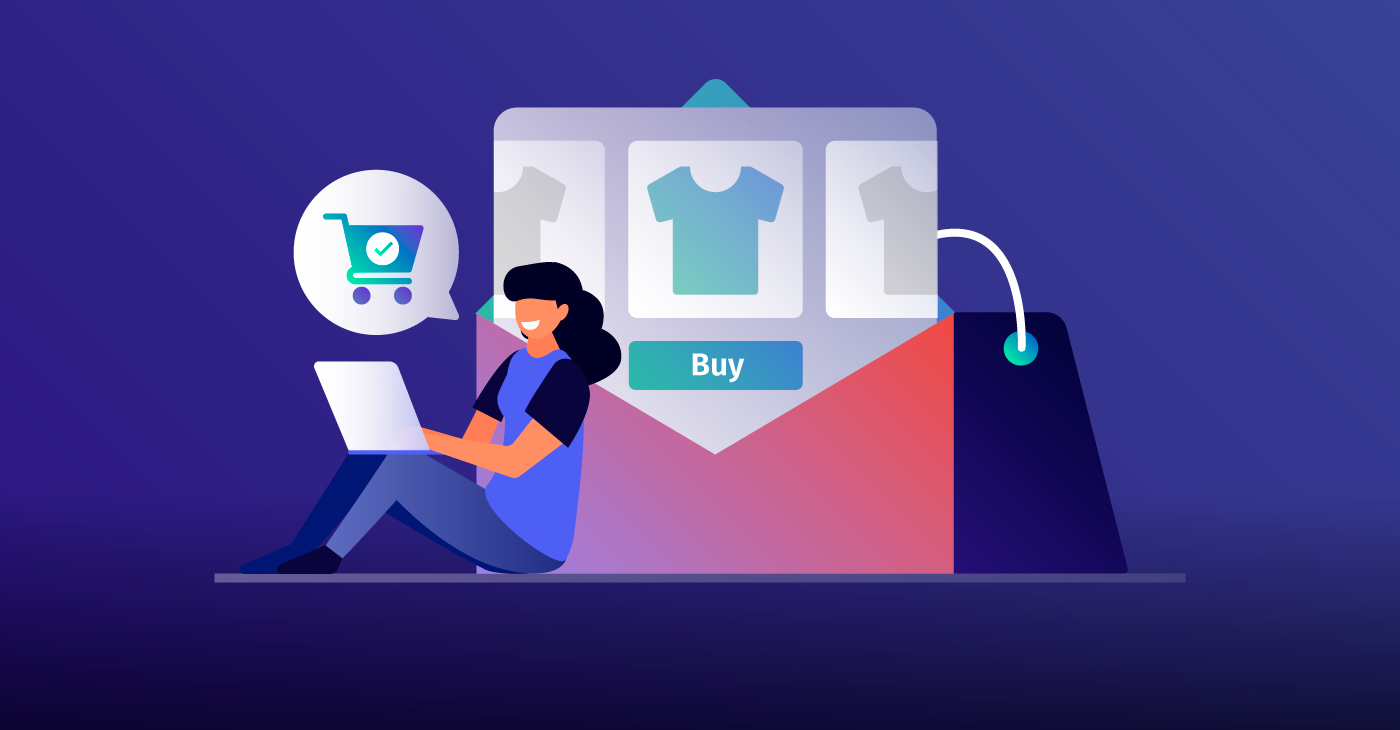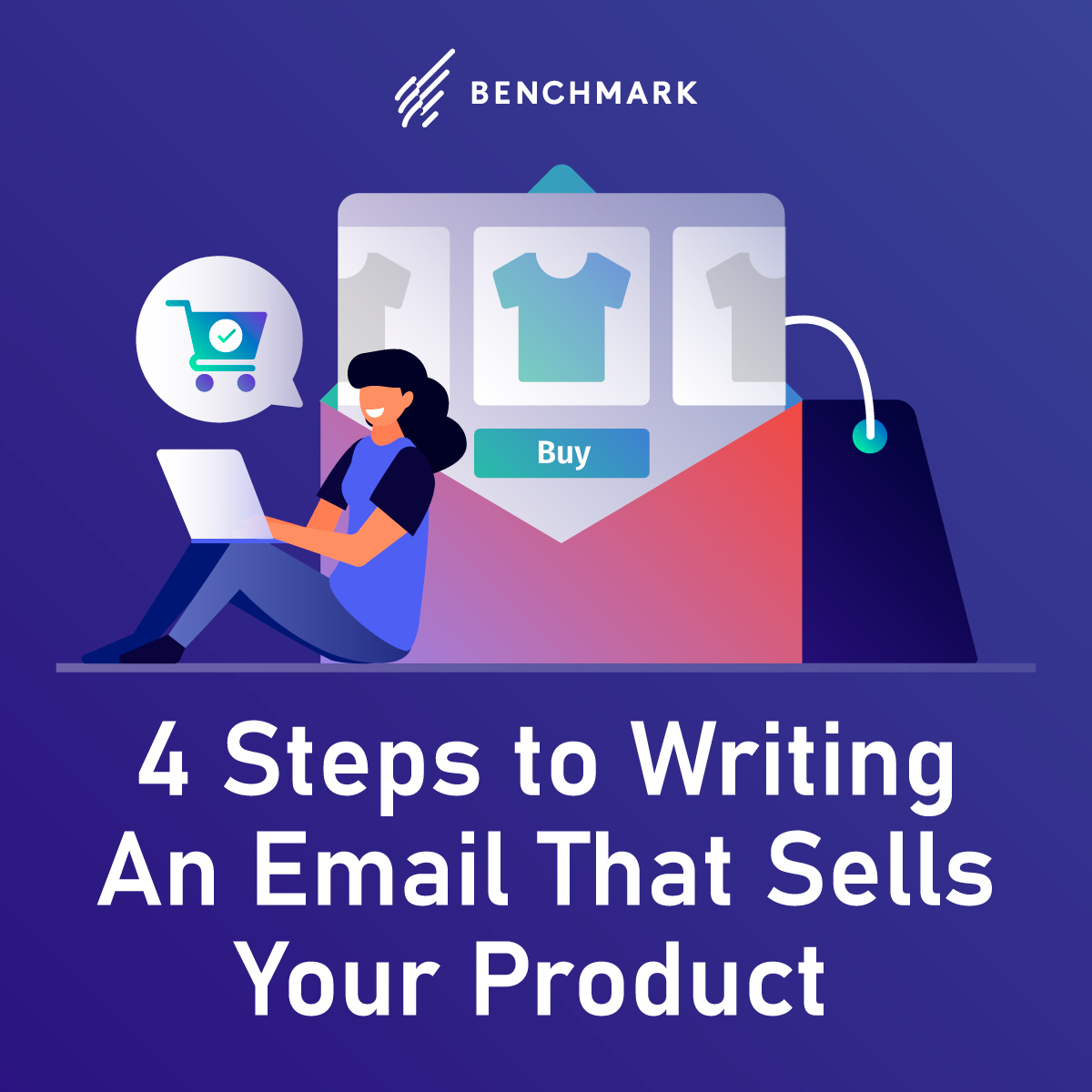
These days, having a digital storefront is a necessity — not a luxury. But, having an online place to transact your business isn’t enough. If you want to keep your business in the black, you need warm traffic full of people ready to purchase.
Out of the numerous marketing strategies out there, when it comes to selling your products online, there’s one that stands the test of time (so far) — selling through email. Whether you’re wondering how to sell an online course, SaaS product, or physical event, there’s something to glean from these four steps on how to write an email that sells your products.
1. Segment Your Email Using the 5 Stages of Awareness
The first step to writing an email that sells is to make sure you’re writing and sending emails to the right audience. But, how do you make sure your targeting and messaging are on point? By segmenting your email list using the five stages of awareness:
- Really unaware – people who aren’t actively looking for a solution and don’t know they have a problem
- Problem-aware – visitors who realize they have a problem but aren’t hunting for a fix
- Solution-aware – browsers which understand they need a solution to their problem but haven’t actively researched options yet
- Product-aware – people who have done some research and are aware of the options for solutions to their problem
- Most aware – prospective customers who are actively seeking a solution to their problem, have done their research, and want to choose a solution
It’s important to distinguish your audience between these five stages because your messaging needs to match their stage. Otherwise, it won’t resonate with them and, worse, instead of hearing cha-ching for earned sales you’ll hear… crickets.
If you doubt the power of segmentation, find proof in the numbers. Marketers have seen as much as a 760% revenue increase by segmenting their email campaigns. What’s more, segmented email campaigns also have a 14.32% higher open rate than campaigns that aren’t segmented, so it’s worth taking seriously.
While there are several ways to segment your email list (e.g., by demographics, location, preferences, interests, action taken, et cetera), be sure to include the five stages of awareness in your groupings, which allows you to write copy that addresses that stage.
The reason why addressing your recipient’s awareness stage works so well is it matches your reader’s trust level to your email copy. It takes time to build trust among your readers, so make sure you’re offering the right value at the right time.
For instance, if you offer one of your products to someone who’s in the “problem-aware” stage, they’ll likely snub your offer. Whereas someone who’s in the “most aware” stage will more likely be ready for your offer.
Additionally, the better you are matching your audience’s trust level with your email copy and offers, the more they’ll trust you. And trust is certainly something that’s becoming a scarcity among brands these days. Sadly, trust declined in 10 out of 15 business sectors from 2017 to 2018.
Plus, a staggering 81% of consumers claim that trust is an important part of their purchasing behavior. So, if you’re looking for a simple marketing strategy for your business and don’t know where to start, building trust by segmenting your consumers according to their needs is definitely a solid foundation.
It’s not enough to just say the right thing; you have to say it at the right time, too. And that’s especially true for your subject line.
2. Conquer Your Subject Line
Your next step is to nail your subject line, which is a tall order because a lot is weighing on a well-written subject line. So much so that 47% of email recipients open your email based solely on your subject line.
On top of that, there are certain words to avoid, like “newsletters,” for example. It decreases your open rate by 18.7%, not to mention, there’s also a list of email spam trigger words you should avoid.
A tip for getting your email subject line right is to aim for less than 20 characters, which can score you an open rate of 18.5%, according to a study by Yes Lifecycle Marketing.
If you include a number in your subject line, your open rate scores a 1.3% boost in open rate and 2.2% lift in reply rate.
Also, title casing matters. If you write a subject line in title case, it should beat out your sentence case and lower case subject lines in both open rate and reply rate.
I could go on and on about the best email subject line formulas, best practices, and trends to help you optimize your subject lines. But, there’s nothing more reliable than testing out your subject lines.
A good place to start is CoSchedule’s email subject line tester, which pumps out a score for your subject line and gives you tips on how to improve it, once you submit your subject line into their form field. For extra reassurance, try using Send Check It’s email subject line tester, which simply grades your subject line.
The moral here is to follow the best formulas for writing your subject lines and be sure to test your subject lines. You may be surprised by the results.
3. Educate Your Audience
Our advice on writing your email body centers around educating your audience and delivering value. Why? Educational content is king. Check out how Harvard Business Review educates its email recipients by simply including blog article content in the body of the email.
An effective way to educate your email readers is to get into your audience’s shoes, empathize with them, understand their problems (within their specific awareness stage, of course), and teach them how to solve their pain points. As you focus on educating your audience, try to also personalize your emails. When your message is personalized, your emails can see an 18.8% average open rate and 21.1% click rate. On top of that, personalized emails deliver six times greater transaction rates, so it’s worth tackling.
On a technical note, try to keep your email concise and between 50 and 125 words, which tend to get a response rate above 50%. To make sure your email copy is readable and easy to digest, use this free Hemingway App by simply copying and pasting your body text into the app and improving the highlighted “hard to read” and “very hard to read” sections.
Formatting aside, the important takeaway is to focus on teaching your audience how to solve their problem, which positions your brand as a reliable expert on your topic.
4. Include A Distinct CTA
Our final step for writing emails that sell your product is to include a distinct call-to-action (CTA). A powerful way to get your readers to click your CTA is to, yet again, make it more personal. Personalized CTAs are so powerful; they can surge your conversation rates by 202%.
If you don’t have fancy software that lets you create smart CTAs, it can be as simple as including your recipient’s name near your CTA, just like Marie Forleo does.
Another way to write a distinct CTA is to be as specific as possible, so your reader knows exactly what they’re getting into if they click your CTA. Take Suiteness’s email CTA for example. By including a button that reads “Plan ahead & save,” their recipient can expect to go to a booking page from their email.
Also, rather than use the overdone “shop now,” “book now,” or “read more” CTAs, write something unique that represents your brand. A simple copy update from “Get it now” to “Gimme” increased Sumo’s conversions by 182%.
Another way to make your CTA stand out is to include a button that visually stands out from the rest of your email, just like Made In’s “let’s cook!” CTA button in red.
All in all: Make your email CTA irresistible to click by personalizing, being specific and unique, and visually standing out.
Better monetize your email list by following the four straightforward steps listed above, and see your email marketing results soar.

















